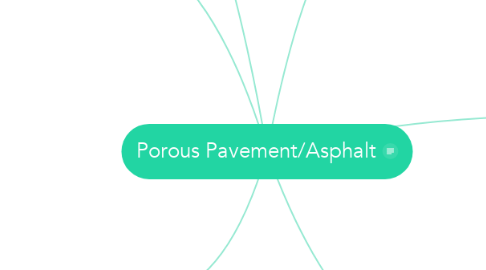
1. Urban Heat Island Effect
1.1. Increase in urban heat induced rain events - Houston, CA, Baltimore area
1.2. Impervious asphalt's influence on the UHI = reduces albedo, increasing sensible heat
1.3. Nonporous asphalt changes the natural watershed's drainage and cycle significantly
1.3.1. As little as 10% coverage of nonporous asphalt leads to degradation of watershed
1.3.2. The area of a city block produces 5x as much runoff as an 'undisturbed'/ rural area of the same size
2. Noise Pollution Reduction
2.1. Noise reduction at the source, on the sound path, and at the receiver: Porous asphalt is "at the source"
2.2. The large pores in the aggregates that allow for drainage, reduction in spray generation and standing water *also trap sound waves when they move downward and absorb vibration energy
2.2.1. Liu et al 2016
2.3. Rubber added to porous asphalt that contributes to reduced noise
3. The Types of Porous Pavement
3.1. Paver stones: similar to cobble stone in appearance. Gaps left in between the pavers usually filled with small aggregates
3.2. Porous asphalt: Many difference mixes. At the most basic level it includes small aggregates on the top for stability bound with an adhesive or glue and course ones underneath.
3.2.1. Can include synthetic fibers, rubber, and the aggregates can vary in size but must be a certain size depending on municipal guidelines
3.2.2. Porous ashalt: Excludes sand sized particles unlike most concretes and nonporous
4. Water processes
4.1. Filters pollutants
4.1.1. NPS and agricultural pollution, large emphasis on N in runoff
4.1.2. Urban runoff: lateral movements of runoff
4.1.3. Urban runoff: infiltration mechanisms
4.1.4. Types of NPS porous asphalt filters efficiently vs. not (heavy metals like mercery, iron, copper, lead vs. nitrogen vs. motor oil...)
4.2. Storm water runoff/flood mitigation
4.3. Ground water recharge
4.4. Less NPS reaching aquatic habitats like rivers and lakes
4.4.1. NPS adsorbs onto fish and aquatic plants
